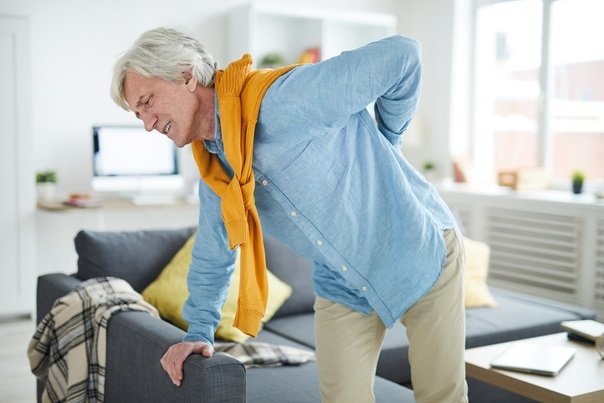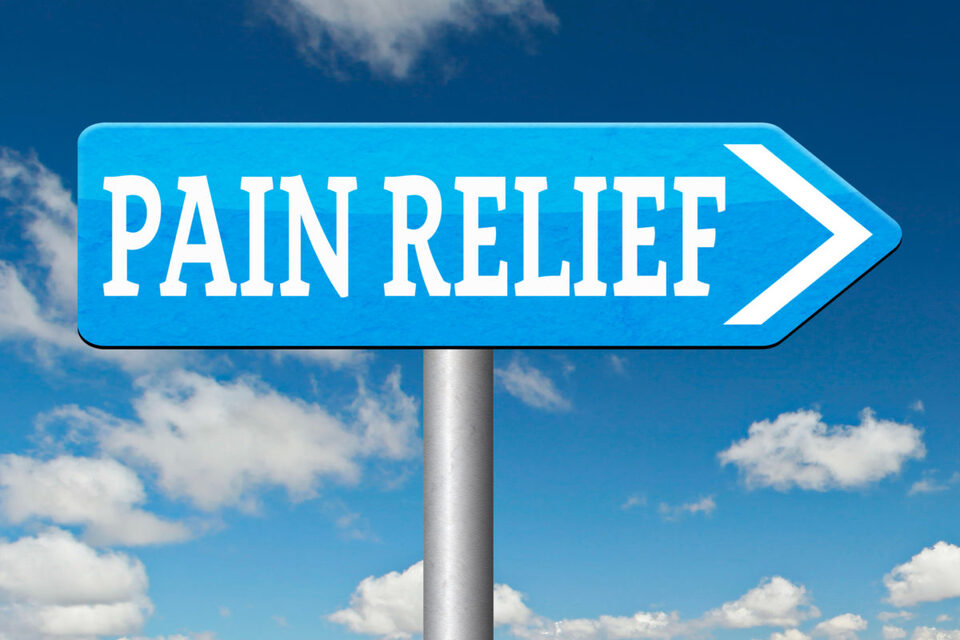
My Personal Journey with Pain and Fear
I learned about the power of fear to increase pain in my own journey as a chronic pain patient. When I was 25 years old I hurt my back while running to get in better shape. I stopped running but the pain continued to get worse and worse until I was in agony 24/7. I was in graduate school for a masters in social work at the time and I was forced to drop out because of the pain. The doctors were useless. They prescribed narcotics, anti-inflammatory drugs and muscle relaxants. None of it helped and it turned me into a zombie. I had no income, no family support, very little savings and my live-in boyfriend of three years decided he wanted to date other women and threw me out.
After more than three years of this, I was desperate. A friend of mine suggested I read a book about the mind/body connection and pain. The book mentioned biofeedback, a treatment that measures your physiology and teaches you to use the information to learn to control your own body. I found a psychologist who offered the treatment. My HMO wouldn’t pay for it but I went anyway.
At my first meeting with the psychologist, he explained to me that worrying, including about the pain, changes your body in ways that increase pain. Worry thoughts lead to fear, which triggers the fight or flight response. When someone is in fight or flight, their muscle tension, heart rate and blood pressure increase. Blood flow to extremities, digestion, immune system response, body maintenance and healing all decrease. The psychologist taught me a simple relaxation technique while measuring my hand temperature, an indicator of stress, and sent me home with a simple biofeedback device to practice on my own.
My pain level decreased by 50% in a day! I no longer felt completely out of control. There was something I could do to help myself! This dramatically reduced the amount of fear I was experiencing. I monitored my hand temperature throughout the day and practiced staying relaxed most of the time. I gradually improved enough to get a full time job and finish my degree. It’s been 40 years since that first biofeedback session. Over time I have found many other strategies, including other mind/body techniques, self- massage techniques, exercise, nutritional strategies and alternative health care providers who can help me stay relatively pain free and healthy. I don’t worry about pain any more, I tend to it.
Buy a Hand Temperature Biofeedback Device

Common Fears that Promote More Pain
Fear of the Pain – Pain is an unpleasant experience that all living things try to avoid. When pain is severe and chronic, interferes with normal life activities and seems to be completely out of our power to control, fear is a natural response.
Fear related to life circumstances – Even when people are healthy, most have concerns about jobs, money, family relationships and their future. When someone is in severe, chronic pain, their fears about being able to take care of themselves and their families, financially and otherwise, significantly increase. Their quality of life decreases and they tend to have more fears about the future. Currently, with a pandemic going on, most people have more fears about health, family safety and finances than ever before.
Fear from our past experiences – Many people have experienced trauma in their lives. The most damaging kind of trauma is chronic childhood trauma from physical or emotional abuse or neglect, sexual abuse, living with an alcoholic parent or in a domestic violence situation. Studies have shown that children who grow up in these circumstances are much more likely to develop chronic illness as adults, including chronic pain. A primary reason for this is that children who do not grow up in a safe environment develop a belief system that the world is not safe and their brains and bodies stay in a hypervigilant, over-aroused and fearful state. The person may be so used to being in that state that they don’t even recognize that they are in it. People who have experienced trauma in adulthood, such as military combat, auto accidents, or being a victim of a crime can also develop chronic fear and hypervigilance.
Strategies for Reducing Fear
Fears are triggered by the thoughts we have. When we have a thought that we are in danger, we generate the emotion of fear. To reduce fear, we need to spend less time thinking about our lack of safety and more time thinking about the possibility of positive outcomes or distracting with a focus on things that make us happy.
Problem solving: This is not to say that we should never think about our problems. When we have health, financial, relationship or other problems, we need to do what we can to address them. Actively focusing on solutions to problems is empowering rather than fear producing. Ask yourself, what inner and external resources do I have to address this problem? Are there family members or friends who can help with advice, resources or emotional support? Are there government agencies or nonprofit organizations who help people with these kinds of problems? Can I find more information about this on the internet or elsewhere?
Cognitive Behavioral Therapy: Often we inadvertently engage in ways of thinking that are not realistic and that increase our stress and pain. One common one is called catastrophizing. When we catastrophize, we project the worst possible outcome. An example is when we are in a lot of pain we might think that the pain will get worse and worse and we will become progressively more disabled and unable to manage our lives and we will lose everything. This type of thinking creates so much fear that it is guaranteed to make us worse. A therapist who offers cognitive behavioral therapy can help alter the tendency to this type of thinking.
Affirmations: The opposite of a negative thought is a positive one. An intentional positive thought is called an affirmation. It is very difficult to have a blank mind and impossible to have two thoughts in your mind at the same time. Affirmations can be substituted for the negative thoughts you normally have. You don’t have to believe the affirmations. Affirmations can change our belief systems in positive ways because the more we hear something the more likely we are to believe it. My favorite affirmation is, “Every day in every way I am getting better and better’. It covers everything! On days that I am having a hard time I use this variation: “With every breath I take I feel better and better’. Another one I like is “I always have everything I need and want and more”. You can be much more specific, of course, focusing on particular concerns. The main thing to be careful about in constructing affirmations is to make sure they are in all positive language. For instance, you don’t want to say, “I’m not going to be in this horrible pain anymore”. Instead, you might say, “My body always feels comfortable and at ease”. The reason for this is that our unconscious mind does not hear the "not", it just creates a fear response from the negative words.
Meditation: There are many different types of meditation. The most common ones involve focusing repeatedly on a neutral or positive word or thought. When anything else comes into your mind, release it and go back to your focus. Once you stop thinking about your worries and fears, the body goes back to its natural, relaxed state. The meditation I like that I have done for years is to focus on the breath. On the inhalation, think the word “relax”. On the exhalation think the words “let go”. It takes practice to train the mind to stay focused for extended periods of time. The more you do this, the easier it gets. You can do this for any length of time, but sessions of 15 minutes or more give the body the most chance to reset from the stress response to the relaxation response.
Visualization: Images have a more powerful effect on our brains than words do. They are the language of our unconscious mind. Studies have shown that when we imagine something is happening, our bodies react as if it is actually happening. For instance, if we imagine that we are walking around, the muscles we use for walking fire electrical signals in the same way that they would if we were actually walking. Imagining being with someone we love or doing something we enjoy changes our bodies in powerful ways. Imagining that we are healthy again and doing the things we love to do helps us to reach that point. Imagining healing can move us in that direction.
Biofeedback: As I mentioned earlier in my personal story, biofeedback involves measuring your physiology so that you can learn to control it. It can help you master relaxation by letting you know, on a moment by moment basis, how successful you are being. You can read more about biofeedback HERE and HERE. You can find practitioners HERE and at www.bcia.org.
Energy Psychology Techniques: If we have experienced trauma, the unresolved emotional energy of that trauma stays in our bodies and keeps us fearful and stressed. Energy psychology techniques quickly process trauma and calm related fears. These techniques involve tapping or holding certain energy points on the body while recalling the trauma. These energy points are based on acupuncture meridians. A good introductory guide to this technique can be found at www.emofree.com. You can see a quick video demonstration of the technique I use HERE. You can find health care providers who can help you with this on this website at paintreatmentdirectory.com or at www.energypsych.org.
Distraction: Another effective way to calm down is to distract with something you enjoy that can take the focus off your problems. Movies, books, time with pets or people you love or pursuing a hobby can fulfill this purpose.
Don't Miss Out on Important Information about Relieving Chronic Pain
Sign Up for Our "Managing Pain Safely" Newsletter
The author, Cindy Perlin, is a Licensed Clinical Social Worker, certified biofeedback practitioner and chronic pain survivor. She is the founder and CEO of the Alternative Pain Treatment Directory and the author of The Truth About Chronic Pain Treatments: The Best and Worst Strategies for Becoming Pain Free. She's located in the Albany, NY area, where she has been helping people improve their health and emotional well-being for over 27 years. See her provider profile HERE. She is available for both in-office and virtual consultations.











Comments